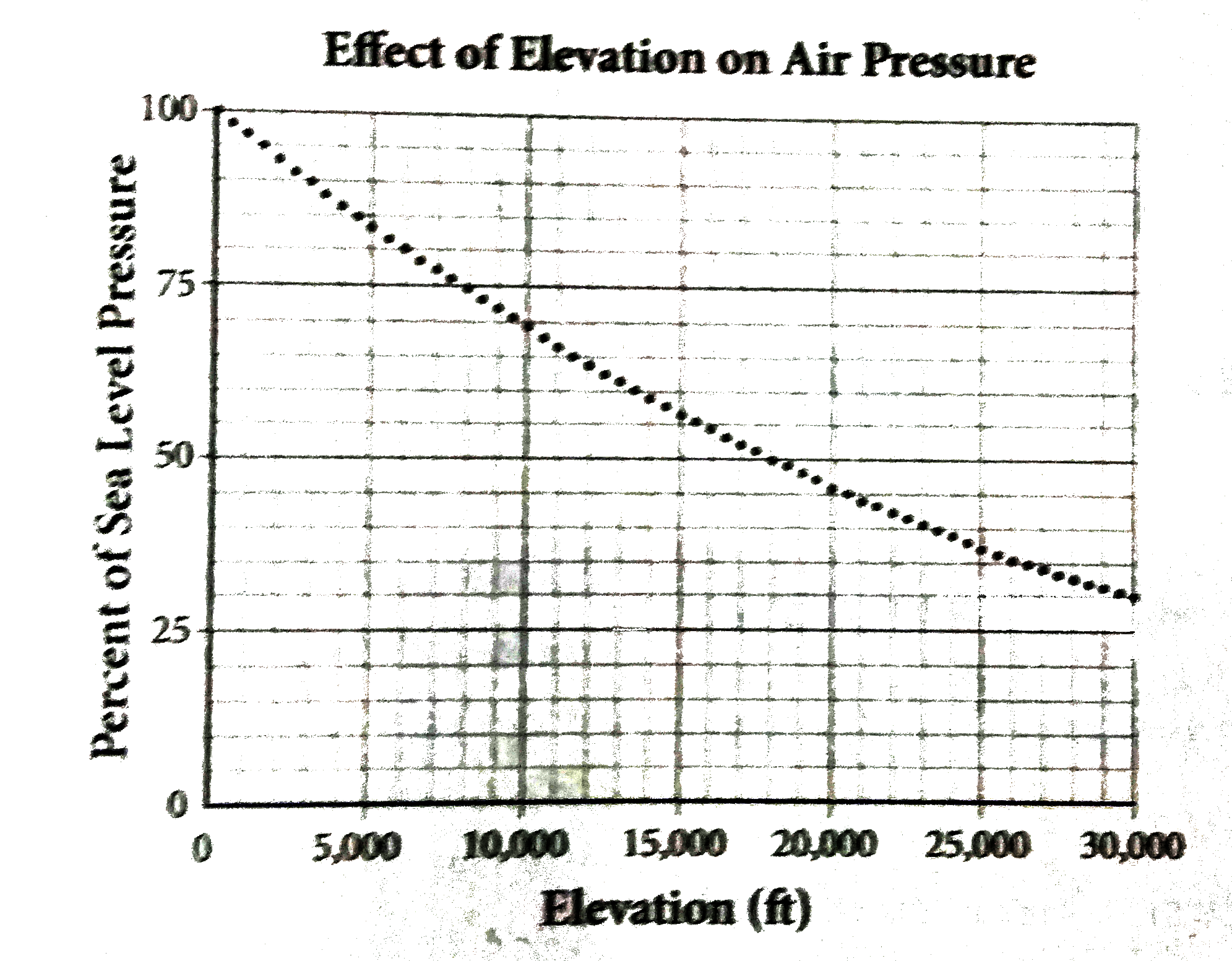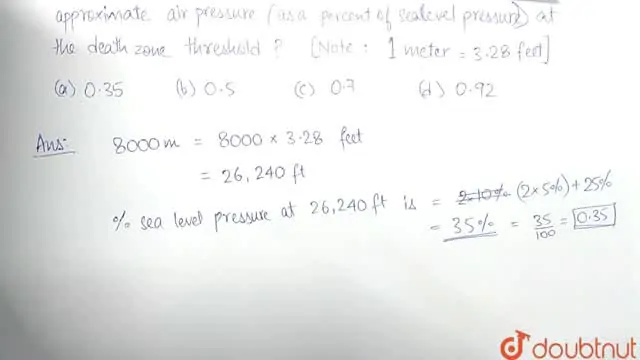As the elevation above sea level increase, the corresponding air pressure decrease. A scatterplot comparing elevations, in feet, to air pressure, as a percent of sea level pressure, is shown balow.

Q. Elevations above 8,000 meters are said to be in the "death zone", a range of elevations in which oxygen levels are not high enough to sustain human life. What is the approximate air pressure (as a percent of sea level pressure) at the death zone threshold?( Note: 1 meter=3.28 feet)
0.35
0.5
0.7
0.92
The correct Answer is:A
Difficult: Hard
Category: Problem Solving and Data Analysis/ Scatterplots
Strategic Advice: when information is presented in a graphic, always read the axis titles and labels carefully, including the units given.
The death zone threshold is given in meters, but elevation is given in feet on the scatterplot. This means you'll need to convert the death zone threshold from meters to feet before doing anything else. Use the factor-label method to assemble a quick calculation:
8,000×3.26ft1m=26,240ft
Locate 26,240 ft on the x-axis of the scatterplot, and then identify the corresponding pressure on the y-axis, which is 35%. (A) is a correc answer.
Related Playlists
Similar Questions
As the elevation above sea level increase, the corresponding air pressure decrease. A scatterplot comparing elevations, in feet, to air pressure, as a percent of sea level pressure, is shown balow.

Q. Air pressure is sometimes measured in inches of mercury. If sea level air pressure measures as 29.2 inches of mercury, what is the approximate difference, in inches of mercury, between the pressure at sea level and the pressure at the death zone threshold?View SolutionWhat is the pressure at sea level ?
View SolutionWhat is the value of atmospheric pressure at sea level and on Mount Everest?
View SolutionElevation of prolactin level in normal female causes
View SolutionThe partial pressure of oxygen at alveolar and tissue level is
View SolutionAs we go higher, the density of air increases and hence pressure decreases
View SolutionAn altimeter is an aneroid barometer which makes use of the change in atmospheric pressure with the change in height above the sea level (altitude).
What is the approximate value of atmospheric pressure at sea level in S.I unit?View SolutionWhat do you understand by the term atmospheric pressure? What is its average value at sea level?
View SolutionWhy is air at sea level denser than air at mountains ?
View SolutionAt high altitudes the partial pressure of oxygen is less than that at the ground level. This leads to
View Solution


